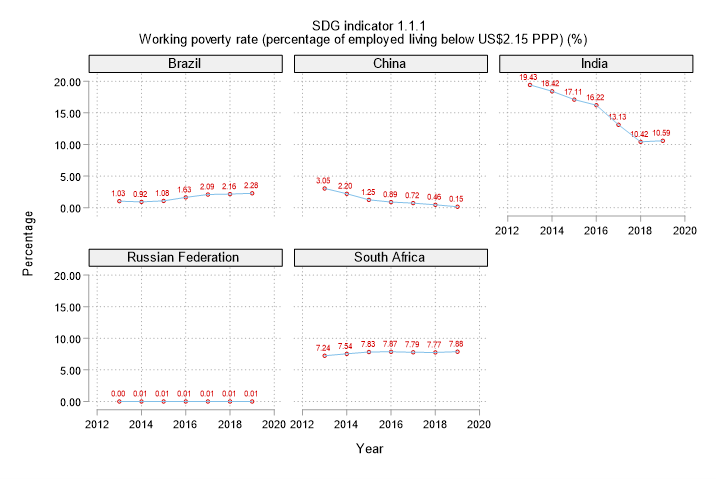Critical Employment Issues Overlooked in the Recent Economic Survey: Job Quality, Women's Employment, and AI's Regulatory Implications
The recent Economic Survey addresses various aspects of the Indian economy, but there are three key employment concerns that warrant further discussion: the level and quality of employment, women's employment, and the impact of AI on labor laws and regulations.
First,
the reference period chosen for comparing employment improvements is the
2017-18 PLFS round, a time following demonetization, which significantly
impacted the labor market. Using this period as a baseline might present an
incomplete picture of employment trends. Comparing current statistics with the
early 2000s, a period often referred to as the golden decade of the Indian
economy, indicates that there is still progress to be made in terms of
unemployment, labor force participation rate, and worker-to-population ratio.
Source: Author uses NSSO’s Employment-Unemployment and
PLFS surveys.
Furthermore, while the survey discusses the expansion of the gig economy, driven by digital platforms, increased internet access, and flexible work arrangements, it does not delve deeply into the quality of these jobs. According to the NITI Aayog, approximately 7.7 million workers were engaged in the gig economy during 2020-21. However, the nature of these jobs is varied, and reports from other sources, such as the Canadian Centre for Policy Alternatives, highlight that gig work can often be insecure, lower-paying, and place a greater burden on workers. This can be seen in terms of workers poverty rate and informal employment.
Source:
International Labor Organization (ILO) estimates
The
International Labor Organization (ILO) estimates indicate that India's working
poverty rate remains relatively high, suggesting that job quality is an
important area for further attention.
The
second issue pertains to women's employment. The Economic Survey notes an
increase in women's labor force participation, particularly in the rural
sector. But still it is lower compared to 2004-05 level.
Source: Author uses NSSO’s Employment-Unemployment and
PLFS surveys.
However, many rural women are engaged in unpaid family work (43% of total rural employed women), whereas a larger proportion of rural men are own-account workers or employers (47.9% of total rural employed men).
This
disparity in the nature of employment between men and women is an important
factor to consider. Therefore although labour force participation rate for
women is increasing and driven by rural sector, it is still unpaid family work
in nature.
Lastly,
while the Economic Survey highlights the transformative potential of AI, it
treats AI primarily as a technological advancement similar to the introduction
of the power loom. It overlooks the ongoing debate about whether AI is merely a
tool that enhances labor and capital or a new factor of production altogether.
According to an Accenture report, AI can be considered a new factor of
production, which will have significant implications for labor. The survey does
not address how labor and capital regulations will need to adapt to the
presence of AI.
In
conclusion, the Economic Survey misses key employment concerns by not
thoroughly addressing the quality of jobs, the employment specific challenges of
women in the labor market, and the regulatory implications of AI. To build a
more inclusive and resilient economy, it is crucial to consider these factors
and ensure that employment growth translates into better living standards for
all.








.jpeg)
टिप्पण्या
टिप्पणी पोस्ट करा